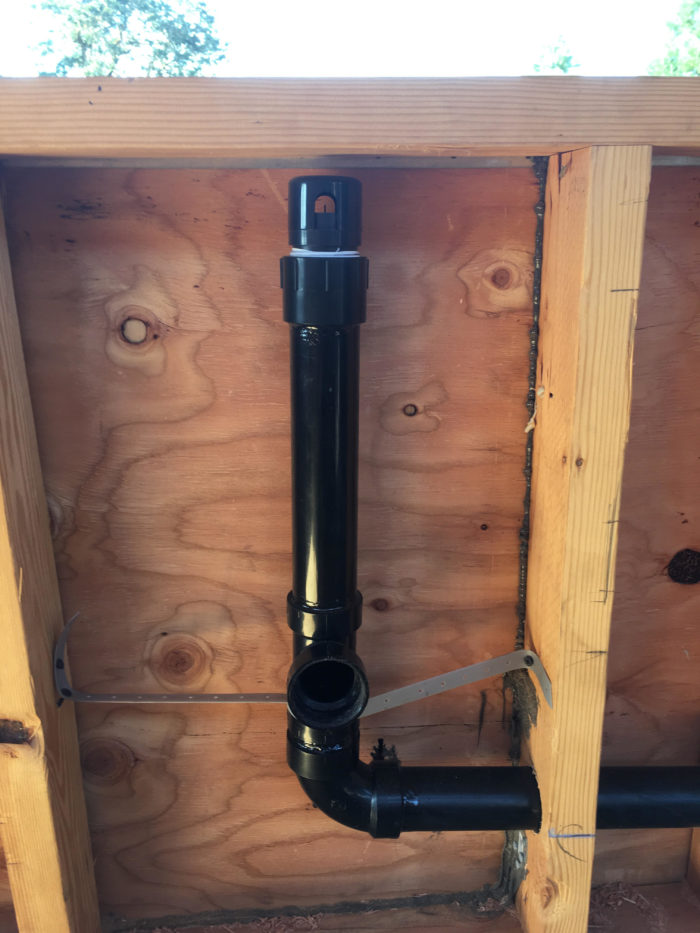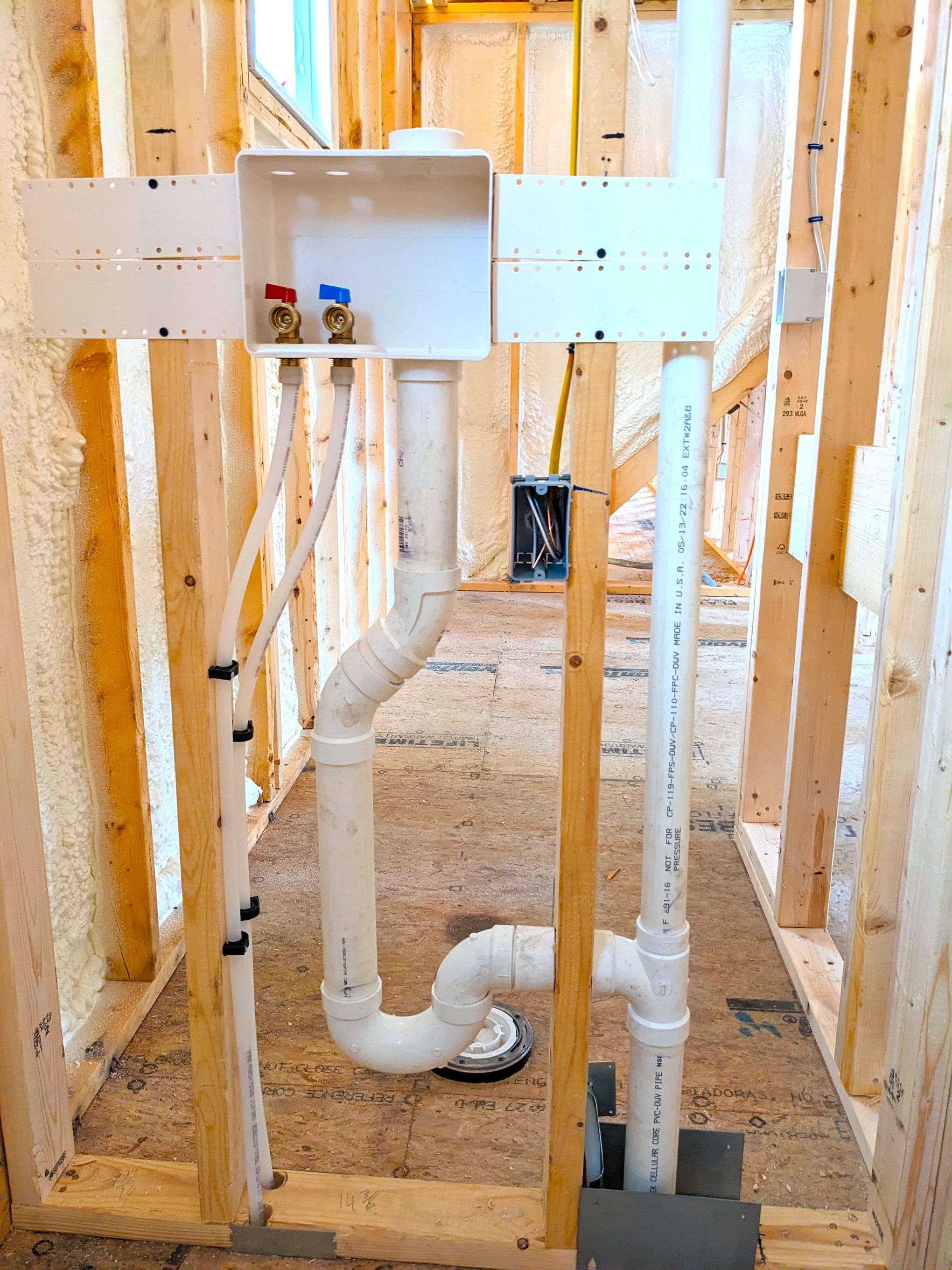Essential Reasons for Proper Ventilation in Plumbing Systems
Essential Reasons for Proper Ventilation in Plumbing Systems
Blog Article
This article following next in relation to What Is a Plumbing Vent and Why Is It Important is definitely entertaining. Don't skip it.

Appropriate air flow in plumbing systems is usually neglected, yet it is crucial for preserving the functionality and safety and security of your home's pipes. Ventilation helps manage atmospheric pressure, protect against the build-up of unsafe gases, and ensure the effective removal of waste. In this overview, we will certainly discover the significance of proper plumbing ventilation, exactly how it works, and the benefits it gives your plumbing system.
Comprehending Ventilation in Plumbing
Ventilation in pipes describes the network of pipelines that permit air to stream with the drain system. These vents serve multiple objectives, consisting of controling air pressure within the pipes, preventing sewage system gases from going into the home, and aiding in the smooth circulation of wastewater.
Just How Air Flow Works in Pipes Systems
Air Pressure Law
Correct air flow preserves well balanced air pressure within the pipes system. When water flows via pipes, it displaces air. Without sufficient ventilation, this displacement can develop adverse pressure, leading to slow down drains pipes or siphoning of water from traps, which can trigger undesirable smells to seep into the home.
Protecting Against Sewer Gas Buildup
One of one of the most critical functions of plumbing vents is to avoid drain gases, such as methane and hydrogen sulfide, from collecting within the home. These gases can posture significant health risks and are highly combustible. Vent pipelines permit these gases to run away securely outdoors.
Assisting in Waste Elimination
Ventilation aids in the efficient elimination of wastewater by stopping airlocks in the water drainage system. When air can flow freely with the vents, it enables water and waste to stream efficiently via the pipelines, lowering the threat of blockages and backups.
Types of Pipes Vents
Key Stack Vent
The main pile vent, also called the air vent stack, is the key vent in a pipes system. It prolongs from the main drainpipe line up via the roofing, enabling gases to escape and fresh air to enter the system.
Branch Vent
Branch vents link to the major stack vent and offer specific components, such as sinks, commodes, and showers. These vents ensure that each fixture has sufficient ventilation to function correctly.
Air Admittance Shutoff (AAV).
An Air Admission Shutoff (AAV) is a one-way shutoff that permits air to get in the pipes system without the demand for a traditional vent pipe expanding via the roof. AAVs are commonly made use of in renovations or locations where mounting a typical air vent is impractical.
Signs of Poor Air Flow in Plumbing.
Slow Draining Fixtures.
If your sinks, tubs, or commodes are draining gradually, maybe an indicator of inadequate ventilation. Inadequate air circulation can develop a vacuum result, making it difficult for water to drain pipes properly.
Gurgling Sounds.
Gurgling audios originating from drains pipes are frequently a result of air being drawn through water traps because of negative stress in the pipes. This is a clear sign of insufficient ventilation.
Undesirable Smells.
Sewage system odors inside your home are a red flag that your plumbing system is not effectively ventilated. This could imply that drain gases are not being adequately vented outside, resulting in potentially dangerous conditions.
Typical Ventilation Mistakes.
Inadequate Vent Sizing.
Using undersized air vent pipes can result in bad air circulation and stress inequalities in the system. It's essential to use vents that satisfy the particular demands of your plumbing system.
Improper Vent Placement.
Placing vents as well much from the components they offer can lower their performance. Appropriate placement makes certain that air can stream freely and effectively via the system.
Ignoring Code Requirements.
Building ordinance offer details guidelines for pipes air flow. Neglecting these codes can cause a system that fails to work appropriately and may result in pricey repairs or health hazards.
Benefits of Appropriate Air Flow.
Boosted System Efficiency.
Correctly ventilated plumbing systems operate much more effectively, with less clogs, faster draining, and much less stress on the pipes. This effectiveness extends the lifespan of the plumbing system.
Improved Air Quality.
By stopping sewer gases from entering your home, correct air flow contributes to much better interior air high quality, making your living atmosphere healthier and much more comfy.
Stopping Water Damages.
Ample air flow aids avoid water from being siphoned out of catches, which can bring about drain gases getting in the home and creating water damage gradually.
Actions to Make Sure Appropriate Ventilation.
Consulting Pipes Codes.
Always seek advice from local pipes codes when creating or modifying your pipes system. These codes supply the required guidelines for appropriate airing vent and ensure your system satisfies security criteria.
Normal Examination and Upkeep.
Regular evaluations can aid recognize prospective ventilation concerns before they become significant problems. Maintenance jobs, such as cleaning up air vent pipes and checking for obstructions, are vital for maintaining the system in good working order.
Expert Installment.
For new installments or major modifications, it's smart to hire an expert plumbing. They have the expertise to guarantee the air flow system is appropriately designed and installed according to code.
Final thought.
Correct ventilation is an essential part of any type of pipes system, making certain that it functions effectively and securely. By understanding the importance of ventilation, recognizing the indications of bad air flow, and taking actions to maintain your system, you can avoid costly issues and shield your home's air high quality.
4 Things You Should Know About Your Plumbing Vents
What Plumbing Vents Are
Also called a vent stack, a plumbing vent is a vertical pipe attached to your drain line that runs through your roof. The plumbing vent pipe, or plumbing air vent, removes gas and odors from your plumbing system and allows fresh air to enter the pipes, helping the water to flow out of the drain pipes.
What Plumbing Vents Do
Plumbing vents have two basic functions. One of which is to allow unpleasant smelling wastewater and sewer gasses to escape your plumbing system instead of entering your home. Plumbing vent pipes are typically located on roofs, away from windows, to ensure the fumes exit the home completely.
The other function of the plumbing vent is to move fresh air into your plumbing system. This helps move water through every plumbing fixture in your house, like toilets and sink drains. Think of the way in which you need to let a little air into the bottle as you pour soda in order to make the drink flow smoothly.
Different Types of Plumbing Vents
True vent: This is the most common vent option. In simplest terms, a true vent is a vertical pipe attached to your drain line that exits through the roof. They often function as the main vent that other fixtures can connect to. Re-vent pipe or auxiliary vent: Attached to the drain line near specific plumbing fixtures, re-vent pipes run up and over to connect to the main vent. Common vent: Two plumbing fixtures installed on opposite sides of a wall are typically tied into the vent stack using something known as a sanitary cross. Wet vent: This venting option operates as a drain pipe and a vent at the same time. Wet vent drainage systems drain water from one fixture while venting the air from another. Although they’ve been used for over 100 years, wet vent systems have only recently been added to the plumbing code in many areas. If you’re planning on installing one in a bathroom remodel, make sure you check your local code prior to construction. Loop vent: For free-standing fixtures like kitchen island sinks, loop vents are ideal. These vent pipes run under the floor, rise from the P-trap, and create a loop inside the cabinet sink. Air admittance valve: An AAV is a one-way mechanical valve typically installed at the site of the plumbing fixture. AAVs allow venting to occur without having to tie into a larger venting system. They’re ideal for venting fixtures where you aren’t able to easily connect to an existing vent system. Common Plumbing Vent Issues
Although vent pipes typically don’t have water flowing through them, they’re still subject to many typical plumbing issues. For example, clogs are one of the most common problems associated with sewer vent pipes. If your vent pipe gets clogged, all of your plumbing fixtures tied into the vent stack will be affected.
A sink with a slow drain that bubbles and gurgles or a strong sewage smell around your toilet are both indicators that your toilet vent pipe is clogged. Because most vent pipes exit through the roof, old leaves, twigs or even a bird’s nest could be clogging the pipe.
Clogs in your vent pipe system cause a buildup of negative pressure, meaning that water won’t be able to flow out of your home very well. It’s similar to putting your finger over the opening of a straw to trap water inside. When you remove your finger, the water is able to flow out of the straw.
If you suspect you have any blockage in your vent, make sure you have a professional come examine the situation. Left unchecked, a blocked air vent can lead to other costly repairs, like leaks and sediment buildup.
Under Pressure
Pipe vents are essential aspects of a home’s plumbing system. Owning a home means learning about all sorts of things you never put much thought into before. But by understanding as much as you can about the important systems of your home, you can keep those budgets intact and those anxiety levels low.
https://www.homeserve.com/en-us/blog/home-improvement/plumbing-vents/

We had been made aware of that report on Why Plumbing Air Vents Are Important from a buddy on another blog. Be sure to take a moment to distribute this entry if you enjoyed reading it. Thanks for going through it.
Quote & Schedule Report this page